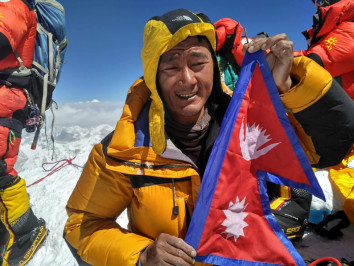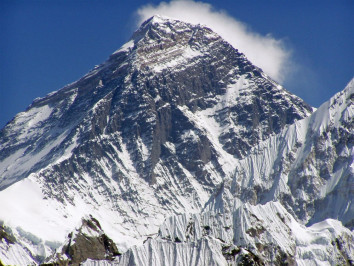Why Is There Only a 2-Week Window to Climb Mount Everest?

 Kedar Neupane
19th Nov, 2025
Kedar Neupane
19th Nov, 2025
Kedar Neupane
I am Kedar Neupane, a passionate traveler, entrepreneur, mentor, and social contributor, born and raised in a village near the Nepal-China border in Sindhupalchok, Nepal. With a Master’s degree in Business from Tribhuvan University and Level 2 proficiency in the German language, I have dedicated my life to tourism, trade, mentorship, and holistic well-being.
🌍 A Global Explorer with a Vision
Having explored 26+ countries, I have gained profound insights into diverse cultures, business landscapes, and global tourism. My travels have taken me to:
🇹🇭 Thailand | 🇧🇹 Bhutan | 🇲🇾 Malaysia | 🇸🇬 Singapore | 🇨🇳 China | 🇭🇰 Hong Kong | 🇩🇪 Germany | 🇵🇱 Poland | 🇦🇹 Austria | 🇨🇭 Switzerland | 🇭🇺 Hungary | 🇳🇱 Netherlands | 🇧🇪 Belgium | 🇫🇷 France | 🇦🇪 UAE | 🇬🇧 UK | 🇺🇸 USA | 🇹🇷 Turkey | 🇶🇦 Qatar | 🇮🇳 India | 🇮🇩 Indonesia | 🇨🇦 Canada
Through my journeys, I have developed a deep appreciation for cultural exchange, adventure tourism, and sustainable business practices.
🏔️ Entrepreneurial & Professional Journey
I am actively involved in tourism, trade, and mentorship, leading multiple ventures that promote sustainable travel, adventure tourism, and business development:
✔ Founder & MD – Actual Adventure Pvt. Ltd. (A leading adventure travel company in Nepal)
✔ CEO – Himalayas Destination Management Company (Creating premium travel experiences)
✔ MD – Nepal Export & Import Pvt. Ltd. (Promoting Nepalese products globally)
✔ MD – Actual Mentor Pvt. Ltd. (Empowering entrepreneurs and professionals)
✔ Chairman – World Expedition Nepal (Focusing on high-altitude expeditions and trekking)
Through my entrepreneurial journey, social contributions, global explorations, and commitment to lifelong learning, I strive to inspire others to pursue their passions while making a meaningful difference. My dream is to build a world where travel, business, and holistic well-being come together, fostering growth, sustainability, and happiness for all.
Why Is There Only a 2‑Week Window to Climb Mount Everest?
Climbers attempt the summit of Mount Everest mainly during a very short weather window in late May because this is the only period each year when the extreme conditions at 8,848.86 meters briefly become manageable. For most of the year, Everest is dominated by the jet stream, a powerful high-altitude wind system that roars across the summit with speeds often exceeding 150–200 km/h, making climbing virtually impossible. In late May, the jet stream shifts north for about 10–14 days, reducing wind speed enough for climbers to move safely above the Death Zone. Temperatures also become slightly warmer—still extremely cold, but just warm enough to reduce the immediate risk of frostbite and allow climbers to survive longer with supplemental oxygen. This period falls exactly between two dangerous seasons: the harsh, frigid winter storms that dump heavy snow on the mountain, and the incoming monsoon, which brings moisture, cloud cover, unstable snow, and high avalanche danger. Late May is the only time when the mountain is relatively stable, visibility improves, and forecasting becomes reliable enough for expedition leaders to choose specific summit days. Even then, only 2–5 days within the window may actually be suitable for a summit push. Months of acclimatization rotations are timed so climbers are physiologically ready just as this weather window arrives. For these combined reasons—wind, temperature, snow stability, monsoon timing, human acclimatization needs, and forecasting—late May remains the safest and most successful period for Everest summit attempts.
Table of Contents
Short answer: Because only for about 10–14 days each year do wind, temperature, snowfall and atmospheric stability align to make the mountain reasonably climbable. Outside that short window conditions are typically too dangerous—even for elite climbers.
Key reasons
1. The jet stream shifts
Everest sits in the path of the high-altitude jet stream. For most of the year, the jet stream sits over the summit and brings winds often exceeding 150–200 km/h. In a short pre-monsoon period (late May) the jet stream commonly shifts north, reducing wind speeds and creating a narrow period of calmer conditions.
2. Temperatures rise slightly
Summit temperatures normally reach –40°C or lower. During the window they are only modestly less cold, but even a few degrees warmer reduces frostbite risk and helps with oxygen efficiency and human performance.
3. Avoiding winter storms and monsoon
The climbing season sits between two dangerous periods: winter storms (heavy snow and extreme cold) and the summer monsoon (moisture, clouds, heavy snow at altitude, and a sharply increased avalanche risk). The late-May window is the most reliable gap between those two.
4. Forecasting becomes usable
Expedition leaders depend on high-altitude weather forecasts. During the short window meteorological models are consistently more reliable, allowing teams to pick specific summit days (often only 2–5 ideal days within the window).
5. Acclimatisation timing
Most teams require 6–8 weeks on the mountain to acclimatise. That schedule is planned to finish exactly as the late-May window arrives—so physiology and weather line up.
6. Shorter autumn window
There is sometimes a post-monsoon window (Sept–Oct), but it is shorter, colder and less reliable—so most commercial expeditions focus on the May window.
Practical implications for climbers and operators
- Even inside the window, only a few days may be suitable for a summit push.
- Crowding occurs because many teams try to use the same good-weather days; this can increase logistical risk.
- Teams must complete acclimatisation rotations well ahead of the forecasted summit days.
- Expedition leaders closely monitor forecasts and often delay or abort summit attempts if conditions worsen.
Mount Everest has only a 10–14 day climbing window (usually late May) because the jet stream, temperature, and monsoon cycles briefly align to create the only relatively safe period for summit attempts. Even then, only a few days may be usable—and teams must be fully acclimatised to make the push.
Written for expedition pages and travel blogs. If you want this adapted for Actual Adventure Pvt. Ltd.
Recent Posts

19th Nov, 2025

19th Nov, 2025

27th Oct, 2025

28th Aug, 2025





.jpeg)










